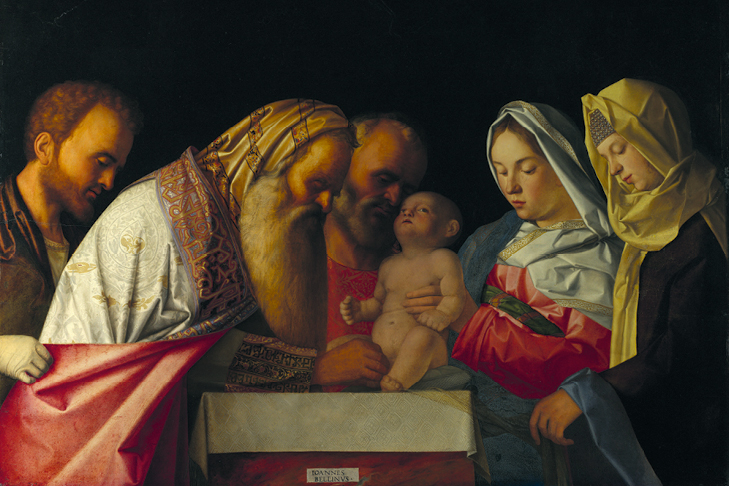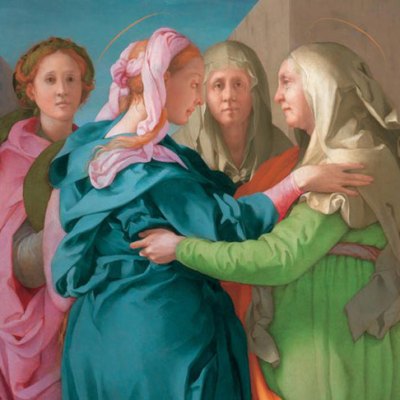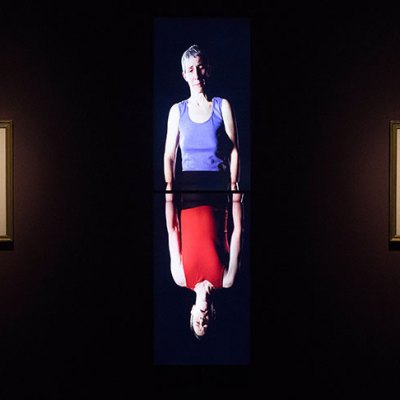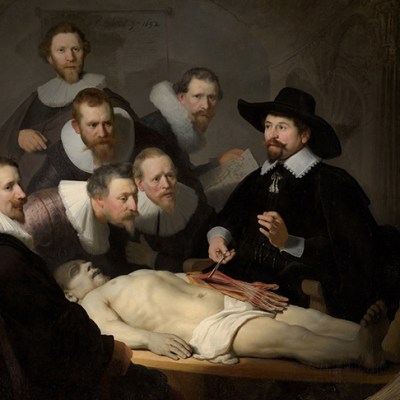To fully appreciate Veiled Presence, Paul Hills’ enchanting book on fabrics and clothing in Italian Renaissance art, the reader needs to understand what it is not. The warp-and-weft materiality of textiles, the technologies and industries of their making, and their economic and social value intrude into the narrative when required, but are tangential to its central thrust. The book does not seek to intervene in histories of fashion or dress, and bears only superficial similarities to the exhibition ‘Fabric of Vision: Dress and Drapery in Painting’ at the National Gallery in London in 2002, despite the shared interest in a number of the gallery’s paintings. Hills is attempting something different, more ambitious. The preface offers a pointed justification: ‘to move beyond the material to the imaginative by emphasising how veils and cloths are versatile instruments that stimulate fantasy and conjure make-believe […] my concern is with drapery as metaphor.’
What Hills has in mind becomes clear from the prologue, which dispenses with historiographical scene-setting and immediately seats the reader in front of the paintings, starting with Giotto and Titian (who bookend this narrative). His reading of Giotto’s Passion scenes in the Arena Chapel at Padua is full of fresh insight, where clothing sets up rhymes (a recurring and potent term for Hills) that can shift ‘the ground of meaning’. Meanwhile, in Titian’s Entombment (at the Prado), the Magdalene’s wispy white robe seems to evaporate into clouds.
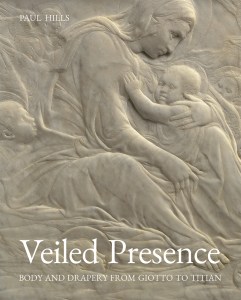
The author is signalling two of his main arguments. First, that drapery was central to the figurative and rhetorical intensity of Renaissance art, comparable in importance to the human form (which it could animate and extend). Second, that in pictorial terms drapery did not simply cover or reveal; it was inherently multivalent and paradoxical: cloth could stand for the corporeal form at the same time as diaphanous veils could blend into the atmosphere. In the case of Bellini’s Circumcision, Christ is revealed through the symmetrical and simultaneous drawing back of an opaque vestment and transparent veil, translating the Pauline idiom that ‘Christ’s flesh is in the veil’. And Bellini has staged the revelatory gestures up close to the picture plane on which he has pinned his signature cartellino. The concealment of the high priest’s knife further invites a reflexive reading, the central but hidden action eliding with Bellini’s own act of painting.
The book divides unevenly in two. The first four chapters are largely contextual, and focus on material from central Italy. Chapters one and two consider the functions and display of cloth in the Renaissance city, in palaces, churches or the open street. These sections offer valuable summaries of an expansive literature, but are distinguished by passages of virtuoso pictorial analysis. We are carefully led into and around the Master of the Osservanza’s Birth of the Virgin (in Asciano) via an intricate trail of cloths and shawls. The unique backdrop of Filippo Lippi’s Coronation of the Virgin for Sant’Ambrogio – lilies held aloft against a striking striped blue ground – is read as a transposition of the vast canvas awnings sewn with lilies that covered the piazza around Florence’s Baptistery for the summertime feast of St John the Baptist. Chapters three and four address the religious symbolism of cloth through the two most significant ‘sacred archetypes’: the temple veil and Christ’s shroud. Together these essays build up a Baxandallian ‘period eye’, nurturing a 15th-century visual sensitivity to textiles in the reader.
Cavalcanti Annunciation (c. 1428–33), Donatello. Santa Croce, Florence Photo: Jim Harris
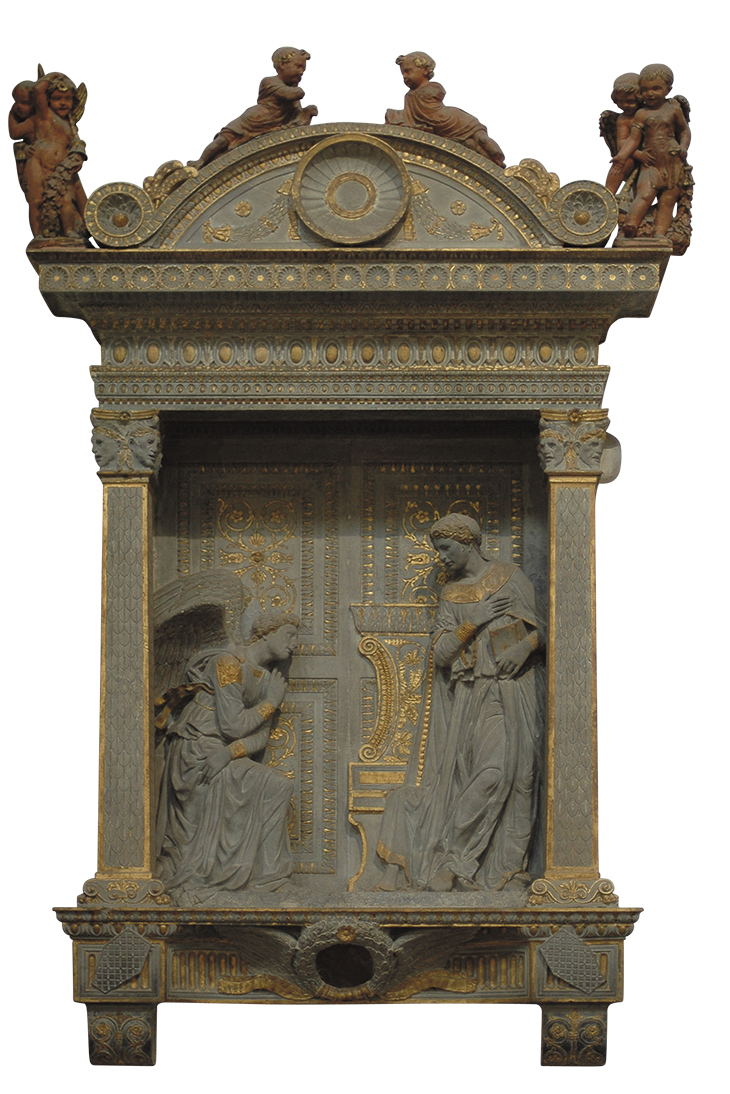
The fifth chapter addresses sculpture rather than painting, preeminently through the works of Ghiberti and Donatello. The humanist sophistication of quattrocento sculpture is linked to passages from Quintilian’s then freshly rediscovered treatise on oratory that expound clothing’s rhetorical qualities. While an awareness of classical models played its part, Hills prefers to emphasise Donatello’s use of drapery to accentuate bodily movement, identifying the different ways in which the Virgin’s drapery falls in the Cavalcanti Annunciation in Santa Croce. The bulk of her mantle rests undisturbed on the bench on which she had been seated an instant before, while the undertucked fold just above her knee conveys her sudden upward motion. Hills observes how ‘the folds slipping across her body suggest sentient living presence’.
Donatello provides a bridge to the second half of the book: three chapters that focus in turn on three Venetian greats – Giovanni Bellini, Lorenzo Lotto and Titian. The chapter on Bellini draws heavily on the earlier discussion of shrouds, with a persuasive reading of the Louvre’s deeply strange Christ Blessing as an Epitaphios cloth brought to life. Lotto’s draperies are more agitated than Bellini’s; he tended to subsume bodies within clothing, with greater emphasis on the puffing up or creasing of fabrics. In Lotto’s altarpieces drapes are often off-centre and rumpled or, in the case of the Entombment of Christ from the Martinengo Altarpiece, held uncomfortably taut. These textiles are jarring, unsettling presences but, Hills explains, they open further tiers of meaning by provoking an awareness of pictorial staging in the viewer. For Titian, veils and curtains are absorbed into the process of painting itself. Hills argues that we need to reconcile three disparate approaches – iconography, social art history and connoisseurship – to fully appreciate how Titian united body, veil and paint ‘as the very stuff and subject of painting’. Titian increasingly confounded veils and clouds, a conceit he figured explicitly in the upper zone of the Vatican’s San Nicolò della Lattuga altarpiece. Alongside Titian’s sacred works, curtains and veils acquired unprecedented erotic charge in his grand Poesie cycle. By the end, Titian’s handling of oil is so intense that in the late Virgin Suckling the Christ Child in the National Gallery, veil, flesh, clothing and curtain resist distinction.
Virgin with Child and Saints (detail; c. 1523–34), Titian. Vatican Museums. Photo: © Scala, Florence
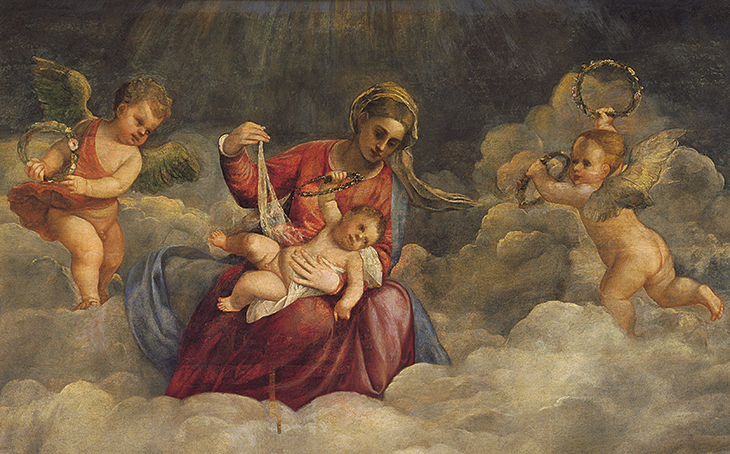
With Titian the book ends. Perhaps wary of a reductive summary, Hills offers no conclusion. In any case, he is much less interested in sweeping historical processes than the works themselves, and our engagement with them. His aim is to encourage ‘looking again – and looking long’. It is telling that artists are as prominent as academics in the acknowledgements. The book reaffirms the philosophical weight and psychological depth of Renaissance paintings, ‘qualities that enable them to live beyond the historical circumstances of their making’. Asides and footnotes invite connections with Heidegger’s philosophy, or Winnicott’s psychoanalysis, and the author’s accumulated insights make their own contribution to the history of pictorial perception. Hills stands apart from the preoccupations of so much Renaissance art history with context and materiality. Beautifully produced and richly illustrated by Yale, the book forms a triptych with Hills’ earlier meditations on The Light of Early Italian Painting (1987) and Venetian Colour (1999). But the chief effect is to encourage the reader to return refreshed to the great Renaissance works in our galleries, to look again, and look long.
‘Veiled Presence: Body and Drapery from Giotto to Titian’ by Paul Hills is published by Yale University Press.
From the February 2019 issue of Apollo. Preview and subscribe here.
